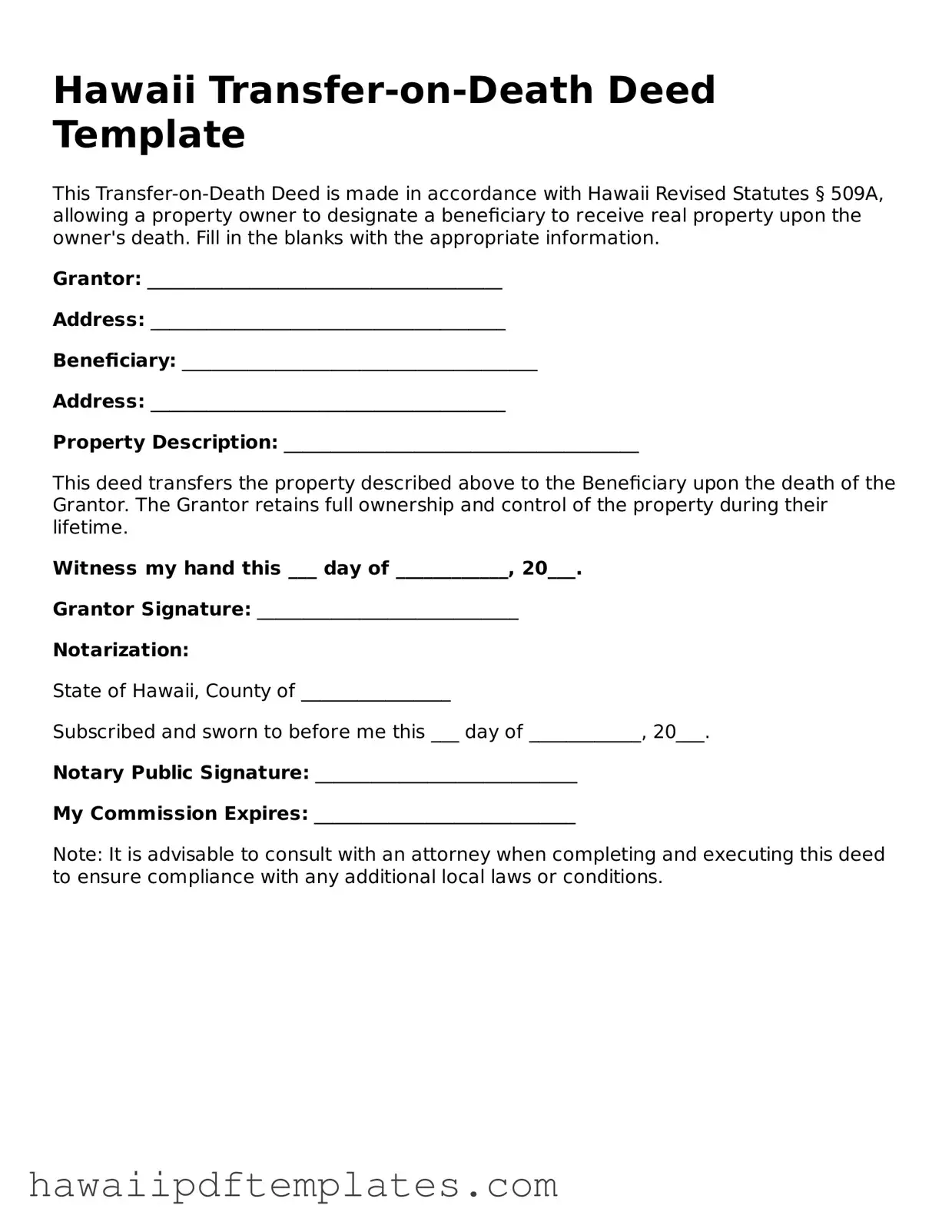Free Transfer-on-Death Deed Document for Hawaii State
The Hawaii Transfer-on-Death Deed form allows property owners to designate beneficiaries who will inherit their real estate upon their passing, without the need for probate. This legal tool simplifies the transfer process, ensuring a smooth transition of property ownership. To learn more about this important form and how to complete it, click the button below to get started!
Customize Form Online
